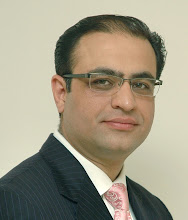The Art Tactic Confidence Index sank to a low of 19 in March, but it had recovered to 46 in November 2009 — in plain terms it means that 46 per cent of the collectors would buy contemporary art now, compared with 19 per cent in March. The improvement, as you can see, is relative and there are hardly any buyers for works over Rs 10 lakh.
In the two years before 2009, values had become unsustainable and some of that trend continues till this day. Most of the shows opening in Delhi in the last two months had disappointing sales; only 20 per cent of the works got sold — so much for the ‘ recovery’! All that you hear today is good news, such as a Manjit Bawa selling at Rs 1.6 crore, which is close to a new record, but not that most of the top contemporary artists were struggling at the auctions. So please discount the statements emanating from the galleries that the market is booming and collectors are buying.
What does one do in 2010? Well, you must know that the values are still high and gallery prices are what they used to be at the time of the boom — maybe 10 per cent lower. If you buy at these prices, you’ll end up with a hole in your pocket. So here are some of the rules for you to follow — buy what you really like and would love to hang on the wall; go for the younger contemporary artists with reputed addresses such as Nature Morte, Gallery Chemould, Sakshi Art Gallery, Guild Art Gallery, Project 88 and Latitude 28. The prices should ideally be lower than Rs 2 lakh, but even then, research the artists before collecting their work. Consult other collectors if you believe your favourite artist has potential to grow in the future.
In the top- end contemporary space, it may be prudent for you to wait and watch. In the year gone by, I have bought T. V. Santhosh because he was able to hold his prices even at the peak of recession. The other is Seher Shah, who is still up and coming, but the values are good. All the others are younger artists with prominent galleries — like Sajjad Ahmed, Prajjwal Choudhary, Shreyas Karle and Siddartha Kararwal, whose work is priced between Rs 50,000 and Rs 2 lakh. At the upper end of the spectrum, the only artist I would buy at reasonable valuations is N. S. Harsha, who’s not prolific but is very talented.
The year 2009 also saw over 600 investors in the Osian’s art fund struggling to get their capital back. My response is that people who invest in a fund that promises to give higher than bank returns are courting a risk.
If people lose money because they weren’t diligent enough, or because they became passive investors after reading art world headlines, then it was bound to happen. The Indian art market does not have a big enough base of collectors to support an art fund, so wait for the market to really grow before you lose your money in such ventures. Art bought for financial returns can be risky because of the lack of pricing transparency and also due to the fact that it isn’t liquid like other assets.
I would rather enjoy the process of buying art, hang some great canvases on the wall, make sure I apply the principles of intelligent buying to protect my capital and spend time reading on how to buy art and not invest in art funds. Spend time on the World Wide Web, visit shows at the best galleries in the cities, read blogs, and you are on your way to becoming a well- informed art collector!
Kapil Chopra is Senior Vice President of Oberoi Hotels & Resorts.He writes a blog on collecting and investing in Indian Contemporary Art at www.indianartinvest.blogspot.com.He also writes for The Telegraph newspaper in the Sunday magazine " Graphiti" every fortnight. In Delhi, he writes for "The Mail Today " newspaper and "First City" magazine.














